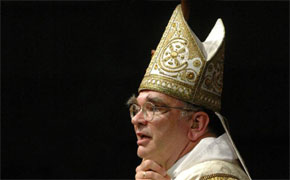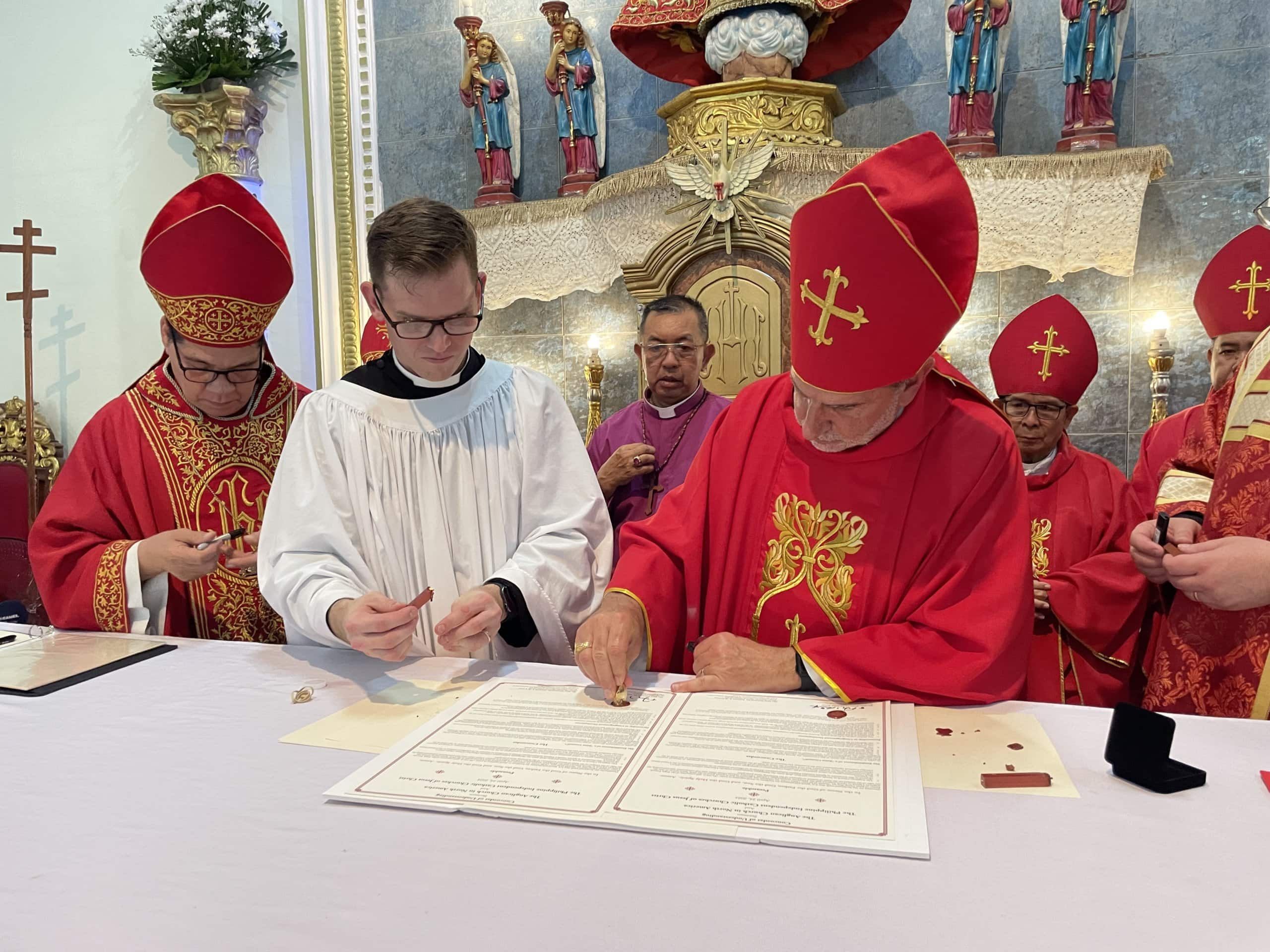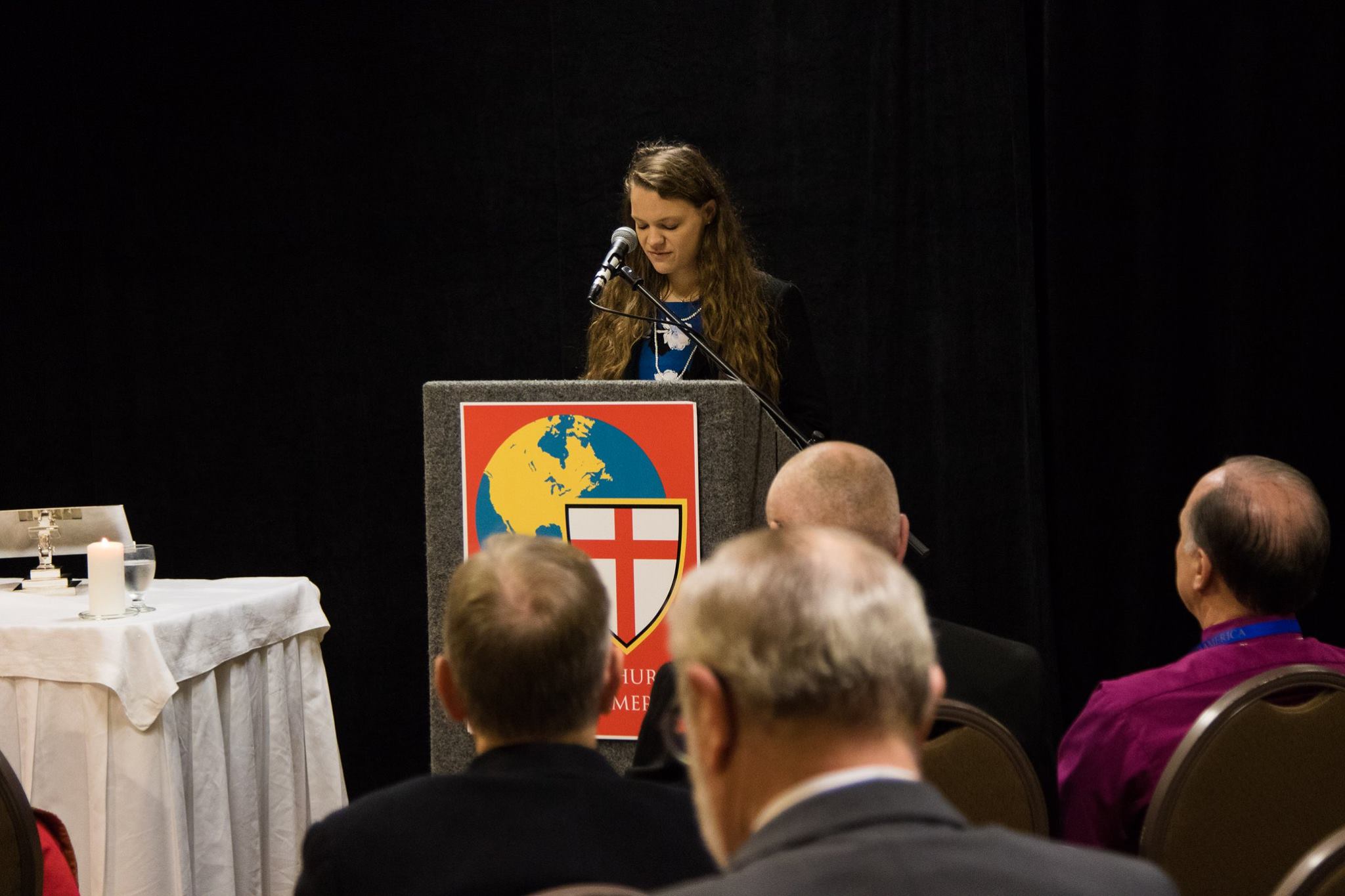The Easter Choice
Now after the Sabbath, toward the dawn of the first day of the week, Mary Magdalene and the other Mary went to see the sepulchre. [Matthew 28:1]
The angel said to the women, “Do not be afraid, for I know that you seek Jesus who was crucified. He is not here, for he is risen, as he said. Come see the place where he lay.†[Matthew 28:5-6]
Archbishop’s Easter Homily – Easter Vigil, 23rd April, A.D.2011
“It is the difference between night and day.†How often have we used this expression? Countless times. This is a metaphor that makes great sense to humankind, because the night and the day are so different. So little, relatively speaking, is possible in the darkness, and so much is possible in the light.
The difference between the “stone cold tomb†(as the Epiphany carol puts it1) and the empty tomb is “night and day.†The watch between Holy Saturday and Easter morn is the contrast between the darkest night and the brightest day.
Before this night all human history ends in night, ends in the tomb. After this night there is the possibility of human life issuing in endless day. Easter changes everything. Jesus changes everything. Technically, of course, it is the cross that achieves what Luther called the “Great Exchange,†but the cross is the ultimate darkness, the ultimate night, in terms of human history as a dead end, where even the light of day (according to the Gospel accounts themselves) becomes dark as night. The ultimate night, Good Friday, ends in the death of Life, followed by the three days night of Jesus’ entombment. Before the dawn of Easter is mankind’s longest and darkest night. Until this night all human life ends in death.
Jesus’ Resurrection makes possible to every man, woman, and child that his or her life might end with life, rather than with death. Jesus’ Resurrection also makes possible “abundant life†before death, life lived without fear of death – life fearlessly lived. It also makes possible life empowered by God’s Holy Spirit, life lived in concert with God’s purposes and God’s will, rather than in the increasing pain of aging and the gathering darkness of the dying that is the consequence of humanity’s endless rebellion.
Accepting Jesus is a choice, for every individual and for whole peoples. Without Jesus day ends in night. With Jesus night ends in day. And it is not just about the way each of our stories ends, but also about the whole of our story itself. Those who follow Jesus become agents of light – by the working of the Holy Spirit and despite their sin – in the darkness of this world. Those who do not know Jesus are increasingly overtaken by the darkness brought by others or by the inevitable death overtaking their own life. These are the options, this is the choice: darkness and light, night and day.
One of the Easter Vigil’s most famous stories is of the baptism of an extraordinarily gifted young man who had sought answers in all the philosophies of his age and in all the pleasures of the world. One day he heard a child singing, “Pick it up and read it.†He heard the song several times, but could not see the child. He picked up a Bible and happened to turn to Romans 13:13-142. He later wrote: “My heart was flooded with light.†He would also later pray: “You have made us for yourself, Lord, and our hearts are restless until they rest in You.†The date was April 24th, 387. The place Milan. The young man’s name was Augustine, arguably the greatest intellect in all of human history. For him the decision was to follow Jesus. For him the decision was to allow day to follow night.
Another of the great Easter Vigil stories occurs in a savage and pagan land on the edge of the known world. On the Hill of Slane, on the night of the spring equinox, in sight of the Irish kingdom gathered around their king to celebrate their deity’s festival, a newly consecrated bishop lights an Easter fire to proclaim to an unevangelized people that true day was breaking in on their night. The evangelist’s name was Patrick. Soon a whole people, a whole nation, would choose for the day that can follow night. The year was 433.
We who gather here for worship on this Easter near the beginning of the 21st century face a world of competing ideologies and pagan savageries. The choice remains one of whether night will follow day, or day will follow night. Every individual must choose and every people must decide. (If there are any here who haven’t yet chosen, it is not too late. Step from the gathering darkness of your night into blazing light of Jesus’ day.) Jesus presents the choice. His cross and empty tomb present a doorway into a very different future, the difference (and the doorway) between night and day. Our call is to live in the day, both by deed and by word. Our call is to the transformation of the world with the love and light of Jesus. We can help one another to live abundantly in the day, and we can help others to choose Jesus and the new day He offers. It is a matter of life and death, of day and night. We here know the tomb is empty. We know what is possible in Jesus. In thanksgiving for what Jesus has done for us, let us be agents of the same Easter choice for others. We know that day does follow night for those who make the Easter choice.
Alleluia. Christ is risen! The Lord is risen indeed. Alleluia! AMEN.
1 We Three Kings, stanza 4, Hymnal 1982, Hymn 128.
2 “Let us conduct ourselves becomingly as in the day, not in reveling and drunkenness, not in debauchery and licentiousness, not in quarreling and jealousy. But put on the Lord Jesus Christ, and make no provision for the flesh, to gratify its desires.†These two verses are preceded by the exhortation: “Let us then cast away the works of darkness and put on the armor of light.â€





